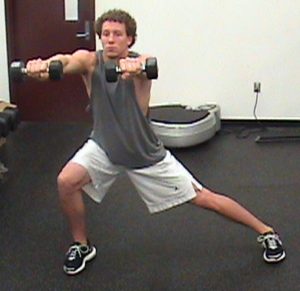by Mitch Hauschildt, MA, ATC, CSCS
Recently, I was looking over a list of Vladimir Janda’s best quotes about the human body and I have to admit that I ended up taking a lot of time going one by one through the list and really took my time as I tried to digest all of the brilliance that he had to offer. It amazes me that not only was he brilliant in so many ways, but many of his writings and concepts were published a number of years ago. It’s almost as if a major section of the movement community ignored him for a number of years. And, even today, when I speak about Janda’s concepts in my courses, many people have never heard of him. If Janda’s name is foreign to you and you work with the human body, please take some time to research him and his teachings. Even if you don’t agree with everything he says, you will be better for seeing the body from his point of view.
As I looked through his quotes, I could have picked any of them to discuss in this week’s post, but there was one that seemed to catch my eye, especially given the season of life and practice that I’m in with my current athletes, patients and clients. He states:
“The unconscious reaction and speed of contraction are the most important for functional stability, not strength”
This is so true and I think the reason that it struck me is because I see a couple of different concepts in the statement that I have been working through either with my students in the seminars that I teach or with my patients.
The first thing that comes to mind is that our muscles react. My good friend Adam Wolf, PT talks a lot about the fact that “bones move, joints feel and muscles react.” When I first heard him say that, I had to stop and think about it. I don’t usually think about the fact that muscles react, because we are always taught in school that muscles are what creates motion. And, that is true to a certain respect, but when you start to break things down, most of the muscles in our body react to the forces being placed on the body (load, environment, gravity) and work to stabilize the body and keep it upright and safe.
Even our prime movers react in a lot of ways. When a limb swings through it’s range of motion during high speed movements (i.e. running), the prime mover feels a stretch and then begins to contract to decelerate the limb in order to fight inertia, and then begins to shorten in order to protect the joint and coincidentally create new motion. Simply stated, this is the stretch reflex that we rely on to improve sports performance. It is a reaction to the current environment for that individual muscle.
Reactive Neuromuscular Training (RNT) also relies on the reactive nature of our muscles to assist us with improving how someone moves so we can help them to move efficiently prior to moving more frequently. Simply put, when a movement pattern sucks, you can oftentimes exaggerate the mistake with an outside force such as a band or a load. When the nervous system senses the stretch put on the muscles in that area (thanks to the exaggeration), it will shorten the muscle back to the optimal length and improve the movement pattern. I have a brand new project coming out in the next few weeks on RNT, so I won’t get any deeper into things now, but trust that there is more, very in-depth information to come on that concept.
The other thing that caught my eye is the last part of his quote. For most people who need more stability (and that’s the vast majority of us), gaining strength is not all that important. I hear a lot from people (oftentimes well educated clinicians), that they need to improve their core “strength”. The honest truth is that if you come in my door in an upright position, you have the core “strength” that you need to be pain free and/or move more efficiently. What you likely don’t have is the proper timing or sequencing of those muscles turning on and off.
If we want to improve stability, we need to improve exactly what Janda says…the unconscious reaction and speed of contractions. This is why I don’t care much for feed forward techniques. I need the brain to turn things on and off in the right order, at the right time, and with the right speed without thinking about it. We should be able to do that unconsciously. Training someone to do it consciously rarely carries over to an unconscious contraction. That’s why bottoms up therapy and corrective strategies such as conscious loading are so effective to improving overall movement abilities.
I enjoy reading Janda’s work and I hope that you do as well. To see the list of memorable quotes that I am speaking about, click here…


Leave a Reply